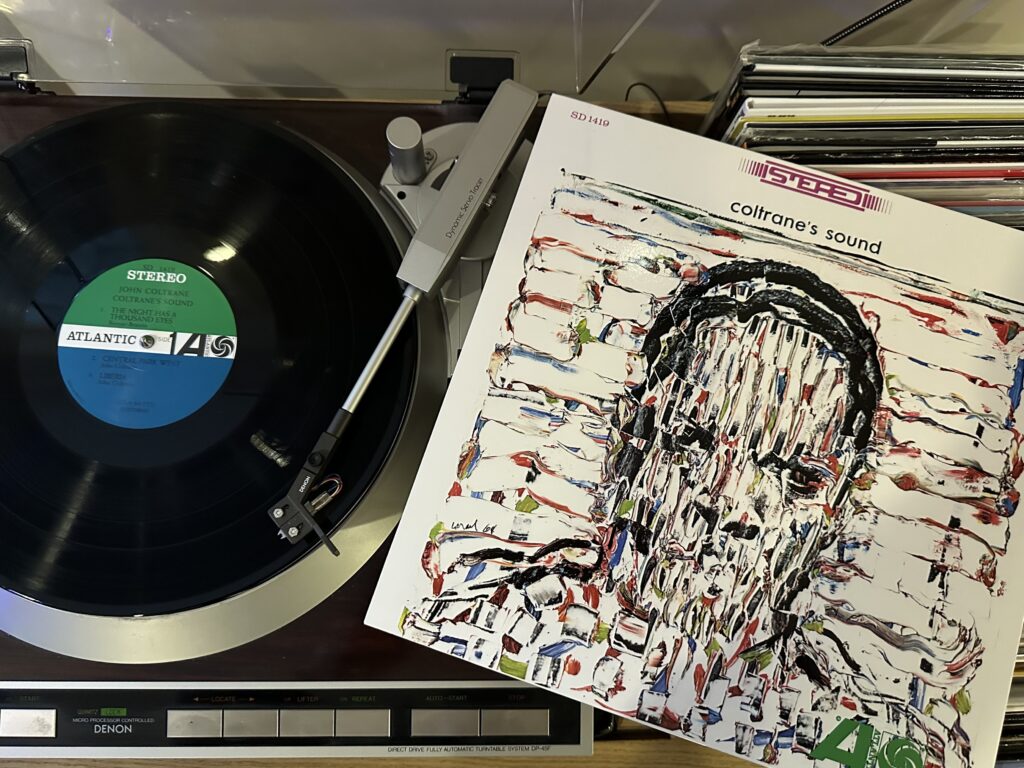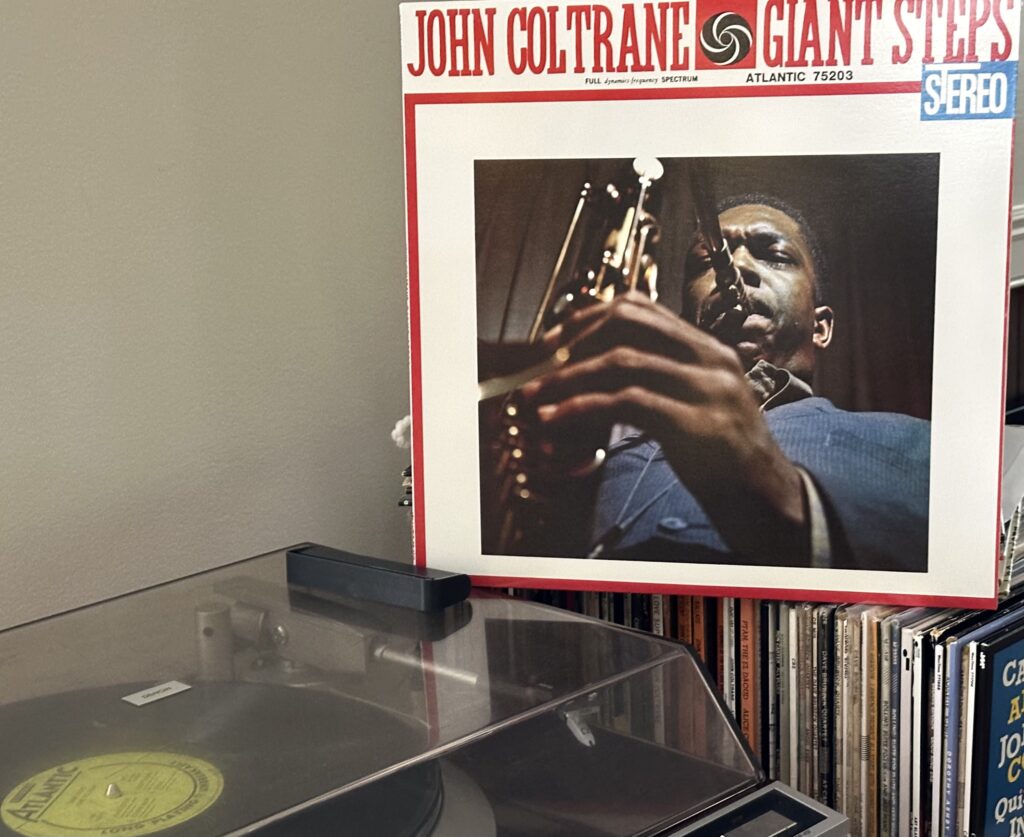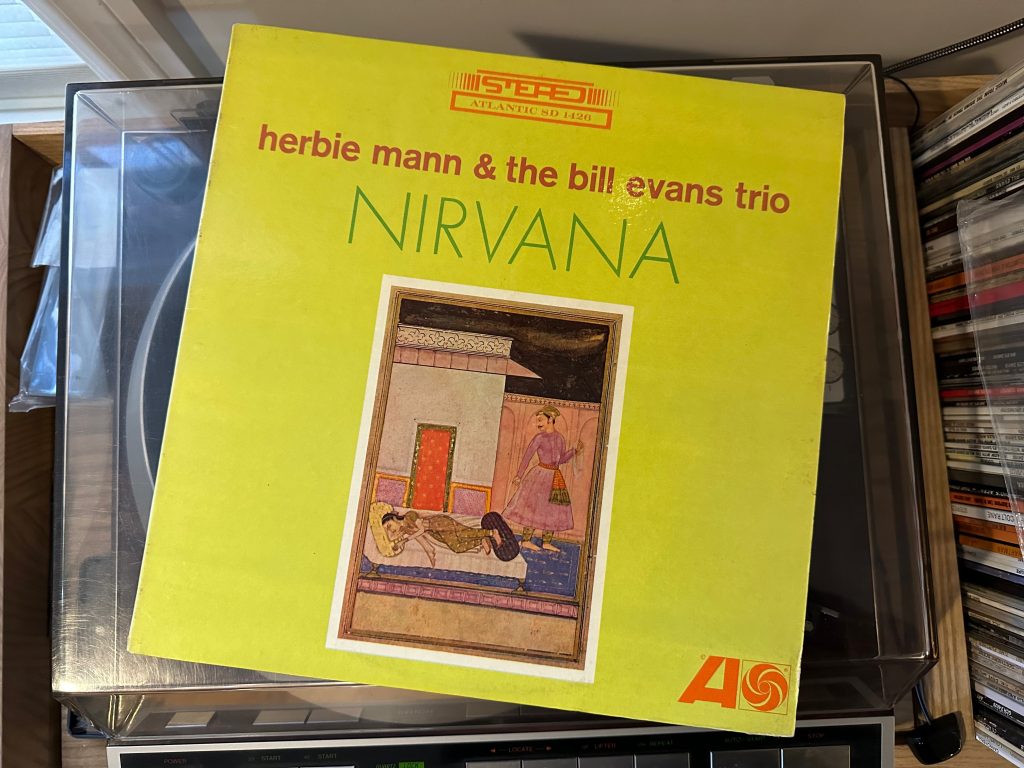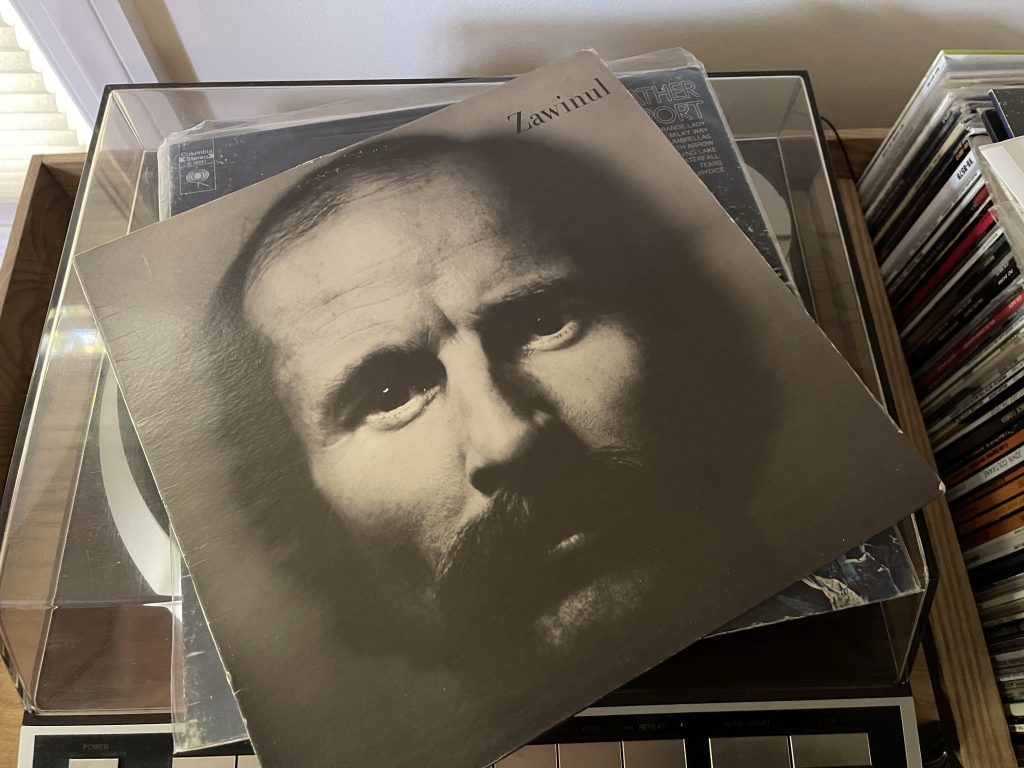
Album of the Week, January 13, 2024
John Coltrane’s stay on Atlantic Records, which started with a bang with Giant Steps, was ultimately brief. Signed in 1959, he recorded Steps, an excellent follow-up (Coltrane Jazz), and then a blockbuster (My Favorite Things) in the span of about 15 months… while also touring with Miles’s quintet (the tour which yielded the Copenhagen performance we’ve looked at recently). My Favorite Things was a hit, yielding the enduringly popular modal version of the Rodgers and Hammerstein title track, which recasts Julie Andrews’ “whiskers on kittens” into a modal exercise in musical ecstasy that calls to mind nothing so much as qawwali chants (about which, more later).
Several things happened as a result of Trane’s rising popularity. First, even before the release of Things in March 1961, Trane’s previous label Prestige Records realized they had hours of recordings by Trane in the can. They began packaging those sessions for re-release, and issued a series of records under Trane’s name but without his approval. (The series began with Lush Life, released shortly before Things in February or early March 1961.) The second thing was that Trane came to the attention of a young Creed Taylor, who had established the Impulse! Records label the year before. Impulse bought out Trane’s contract in May 1961 and he began a historic association with that label after recording one more session for Atlantic, which yielded Olé Coltrane.
Not to be outdone by Prestige, Atlantic followed their playbook and issued their own set of unauthorized Trane albums, assembling them from unused recordings from the sessions for the earlier albums. Coltrane Plays the Blues was the first to be released, in 1962. The second was Coltrane’s Sound, released in the summer of 1964. The album, recorded during the My Favorite Things sessions in October 1960, featured the earliest stable incarnation of the classic John Coltrane Quartet, with McCoy Tyner on piano, Elvin Jones on drums, and Steve Davis on bass. Jones had come to Trane’s band earlier in 1960, following time in Sonny Rollins’ quartet. Tyner had been friends with Coltrane for years, both hailing from Philadelphia, and also joined in 1960. Davis was Tyner’s brother-in-law and had joined the band for the My Favorite Things session. The checkered history of this album aside, it plays like a coherent concept from start to finish, wrapped in an unusual painted cover by Marvin Israel, Atlantic’s art director at the time (who must have liked the technique he used for the cover; he used it again for albums by Sonny Stitt, Charles Mingus, and Milt Jackson).
“The Night Has a Thousand Eyes,” composed by Jerry Brainin, opens the album with a bold, major key statement. Trane blows the head melody over a percolating accompaniment from Tyner and Jones; Davis keeps the tune rooted, alternating between a walking bassline on the B section and a suspended D (a fourth down from the tonic) on the A section. Trane’s solo is classic “sheets of sound,” but with a greater emphasis on melodic development. Tyner’s, by contrast, leans into the chords percussively, sounding a distinctly different approach to the melody. Where Tommy Flanagan sometimes kept himself elegantly in the background on Giant Steps, Tyner’s melodic development and forthright chords announce him as an equal partner in Trane’s overall sound. Throughout it all, Jones matches Tyner’s percussive power, delivering bursts of sound on off beats and generally throwing gasoline on the collective fire. And yet, despite all the collective propulsion, the track also reads as a happy melody. It’s a neat trick that Wayne Shorter would nick years later for “Yes and No” on his album Juju.
In the liner notes to the album, jazz critic Ralph Gleason notes that Cannonball Adderley recounted a conversation between Trane and Miles in which Miles asked him “Why you play so long, man?” and Trane responded, “It took that long to get it all in.” As if to refute that earlier conception of jazz, as well as Gleason’s note that there are “those who claim that he will not play ballads,” “Central Park West” is a laconic ballad of Trane’s own composition, featuring an unhurried melody over a meditative set of chord changes. In addition to featuring Tyner’s most outstanding moment on the record in the introduction to his solo, the work also features some truly gorgeous, delicate playing from Trane on soprano sax, as well as the rest of the quartet.
The mood shifts as the quartet plays the opening notes of “Liberia” over a thunderous roll of Jones’ drums. The tune, another Trane composition, is in the same mode as Dizzy Gillespie’s “Night in Tunisia,” and bears other similarities — right up until the point where Trane enters the B part of the head, transforms the tonality into a different mode, and starts stretching up. The rest of his solo is played as a series of attempts to take flight and scale beyond the limits of the tune. It’s a scorcher, and it points the way forward to where Trane would be going in just a few short years.
The second side opens with the other cover on the album. Tyner opens Johnny Green and Edward Heyman’s “Body and Soul” with a modal chord progression that seems to hang Trane’s melody in the storm tossed air, a ray of light through the clouds. Here Coltrane’s ballad playing is a little more loquacious than on “Central Park West,” but still has that note of yearning. McCoy Tyner’s solo is sketched out in block chords in both hands for the first chorus, then shifts to a more melodic approach in the right hand. In the bridge he shifts to playing triplets for a few bars, responding to some of the rhythms introduced by Elvin Jones underneath. Jones’ playing deserves its own paragraph. No mere dusting with brushes here! He provides a counter-rhythm to Tyner’s strong rhythm in the block chords, complete with small explosions of sound as the tune shifts from chorus to bridge. At the end the entire rhythm section is in rhythmic unison under Trane’s unexpectedly tender closing.
The opening of “Equinox” features more of the rhythmic interplay between Tyner and Jones. The pianist’s four-square chords, doubled by Davis, are filled in by Jones’ counterpoint in an eight-bar intro. The band then shifts into eight bars of a syncopated blues rhythm on the tonic chord before Trane enters, blowing the blues. As with “Central Park West,” the opening statement is almost terse, but Trane’s first solo opens up the top end of the scale and begins to hang sheets of sound across the chords. In the fourth chorus we begin to get more of Jones’ rolling thunder, but it’s drawn back as Tyner hits gentle notes under Trane’s final bars. Tyner’s solo opens again with block chords, here less pounding and more tender. He plays with the rhythm of the blues as well as with the melodic center, introducing countermelodies centered on the sixth and seventh degrees of the scale, then launches runs of triplets that seem to take flight like birds. His final chorus is almost entirely on the tonic chord, a neat trick that refocuses the tune into the ominous storm clouds.
Trane returns to the pianoless trio form for only the second time (after “Lush Life”) on “Satellite.” The sax and bass sketch out the melody in a square quarter note rhythm, but Trane is quickly in flight over the walking — running, really — bass line and the rollicking cannon fire laid down by Jones on the drums. While the changes bring “Giant Steps” to life, the overall impression is more playful as the trio springs from melody into shimmering exploration and back. Even without Tyner, there’s no mistaking Trane’s approach here, a sort of joyous exploration of the possibilities of the sound of his new small group.
The group with Davis was short lived, and there will be a different bassist in the chair (or two!) when we listen to the next Trane album. But the sessions recorded by this formation stand as high points in Trane’s early output, even as he was already restlessly moving beyond this sound. We’ll be in a very different place next week.
You can listen to today’s album here:



